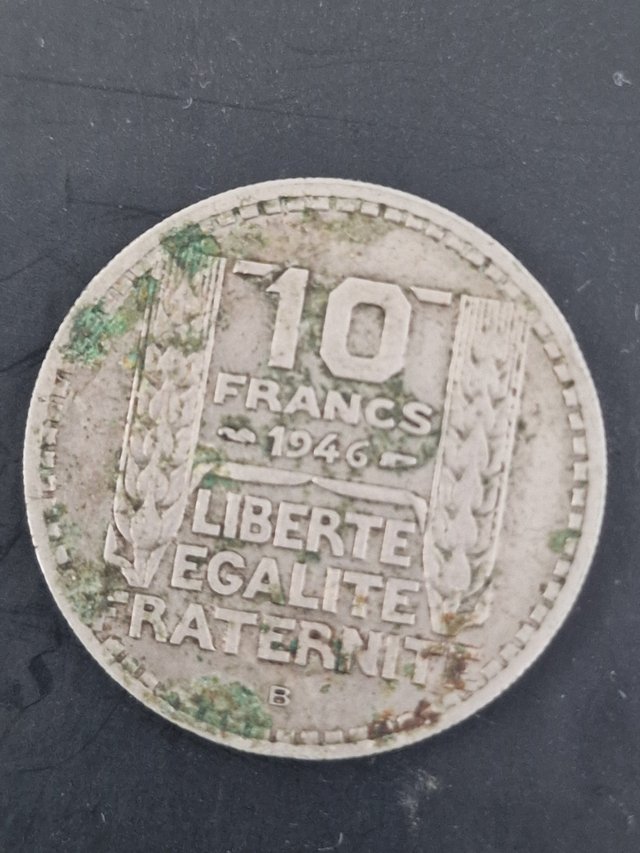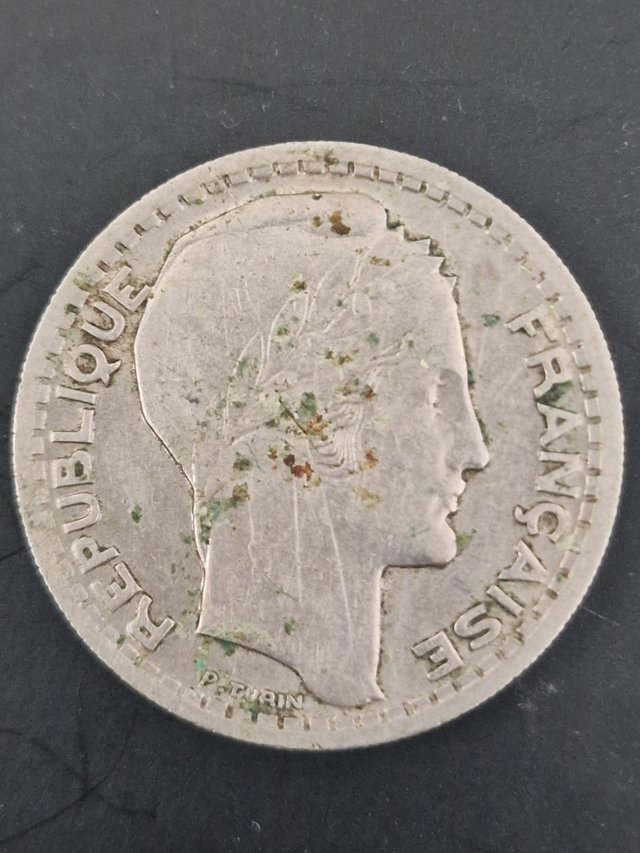10 franc 1946
I am revealing to you tonight a French coin of the post-World War II period that is an extremely rare example of post-war numismatics. It is a 10 franc coin stamped in 1946, the year in which the country was recovering from World War II and trying to rebuild its economic, not to mention national, society. Obverse: A traditional portrait of a woman representing the Republic, medal and sculpture maker Pierre Turin's work, his initials in lower left. Reverse: The value 10 FRANCS, the year of issue 1946 and the classic French Revolution cry 'LIBERTÉ ÉGALITÉ FRATERNITÉ', all within a wreath of sheaves of wheat. This was a coin which was designed to celebrate rebirth, the power of work and the value of agriculture in the trying days of establishing the country. The coin itself was bronze-aluminium, the norm in post-war mint when precious raw materials were limited and function and injecting money into the economy were the priorities.
The remarkable thing is that the Turin series 10-franc coins remained in French circulation for decades and weathered a couple of crises. They came into use during wartime as a way to exchange old francs having reduced purchasing power, and they were intended to beget a new identity for a state on bases of equality and democracy. It is interesting to notice that even though France was war-torn, the economy had to run effortlessly soon enough so that the economy would be able to pick up again. Then 10 francs counted and one was able to buy daily simple commodities such as bread, milk or papers. A coin like this today, however, is not just a reminder of the past, but a symbol of the times when the terms liberty, equality and fraternity were made to acquire a new meaning in the wake of occupation trauma and war crimes.
The 1946 variety is also worth something to collectors because it is among the first issues printed after the war and, being rare, has become legendary in French numismatic history. Condition also has an impact – properly conditioned types can be expensive as long as there is not even a hint of severe corrosion and there is readability of details. These coins were produced in large series, but through constant use, they are getting fewer and fewer in good condition. To possess this specimen is to have a piece of French post-war history, where even small things counted and a coin held on to hope for the future to be more than just today. It is it is such a finding that indicates history is not just of war and of treaties, but of common people whose lives were altered with the help of these wee discs in a whole new world.


